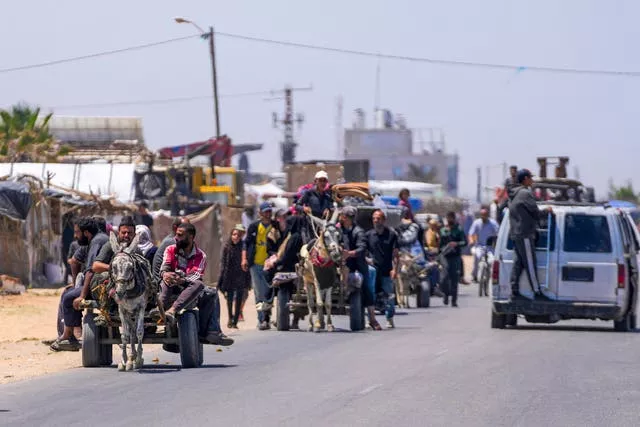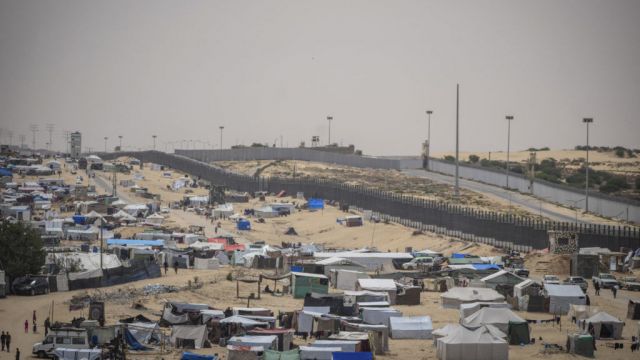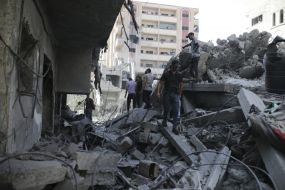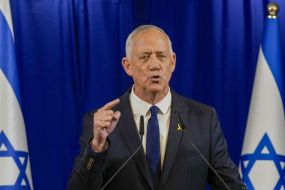Palestinians across the Middle East are marking the anniversary of their mass expulsion from what is now Israel with protests and other events across the region.
It comes at a time of mounting concern over the humanitarian catastrophe in Gaza.
The Nakba, Arabic for “catastrophe”, refers to the 700,000 Palestinians who fled or were driven out of what is now Israel before and during the war surrounding its creation in 1948.
More than twice that number have been displaced within Gaza since the start of the latest war, which was triggered by Hamas’ October 7th attack into Israel.

UN agencies say 550,000 people, nearly a quarter of Gaza’s 2.3 million people, have been newly displaced in just the last week, as Israeli forces have pushed into the southern city of Rafah and re-invaded parts of northern Gaza.
“We lived through the Nakba not just once, but several times,” said Umm Shadi Sheikh Khalil, who was displaced from Gaza City and now lives in a tent in the central Gaza town of Deir al-Balah.
The refugees and their descendants number some six million and live in built-up refugee camps in Lebanon, Syria, Jordan and the Israeli-occupied West Bank.
In Gaza, they are the majority of the population, with most families having relocated from what is now central and southern Israel.
Israel rejects what the Palestinians say is their right of return, because if it was fully implemented it would likely result in a Palestinian majority within Israel’s borders.
The refugee camps in Gaza have seen some of the heaviest fighting of the war. In other camps across the region, the fighting has revived painful memories from earlier rounds of violence in a decades-old conflict with no end in sight.
At a centre for elderly residents of the Shatila refugee camp in Beirut, Amina Taher recalled the day her family’s house in the village of Deir al-Qassi, in what is now northern Israel, collapsed over their heads after being shelled by Israeli forces in 1948.
The house was next to a school that was being used as a base by Palestinian fighters, she said.

Taher, then three years old, was pulled from the rubble unharmed, but her one-year-old sister was killed. Now she has seen the same scenes play out in news coverage of Gaza.
“When I would watch the news, I had a mental breakdown because then I remembered when the house fell on me,” she said. “What harm did these children do to get killed like this?”
Daoud Nasser, also now living in Shatila, was six years old when his family fled from the village of Balad al-Sheikh, near Haifa. His father tried to return to their village in the early years after 1948, when the border was relatively porous, but found a Jewish family living in their house, he said.
Mr Nasser said he would attempt the same journey if the border were not so heavily guarded. “I would run. I’m ready to walk from here to there and sleep under the olive trees on my own land,” he said.
The latest war began with Hamas’ rampage across southern Israel, through some of the same areas where Palestinians fled from their villages 75 years earlier.
Palestinian militants killed some 1.200 people that day, mostly civilians, and took another 250 hostage.
Israel responded with one of the heaviest military onslaughts in recent history, obliterating entire neighbourhoods in Gaza and forcing some 80 per cent of the population to flee their homes.
Gaza’s Health Ministry says more than 35,000 Palestinians have been killed, without distinguishing between civilians and combatants in its count. The UN says there is widespread hunger and that northern Gaza is in a “full-blown famine”.
Israel says its goal is to dismantle Hamas and return the estimated 100 hostages, and the remains of more than 30 others, still held by the group after it released most of the rest during a ceasefire last year.
Israeli troops pushed into Rafah last week. Prime Minister Benjamin Netanyahu has portrayed the city on Gaza’s southern border with Egypt as Hamas’ last stronghold, promising victory.
But the militants have regrouped elsewhere in Gaza, even in some of the hardest-hit areas, raising the prospect of a prolonged insurgency.







